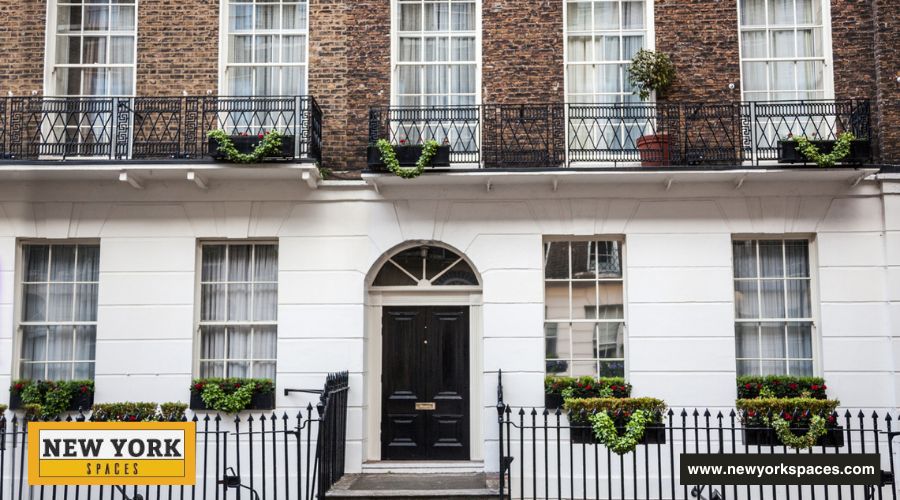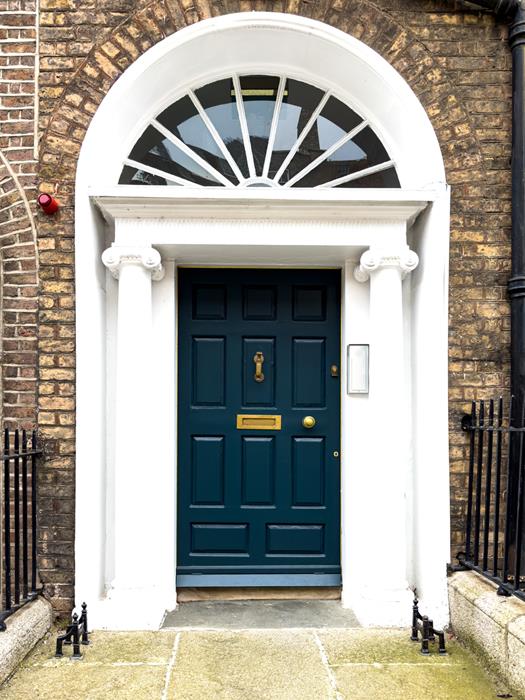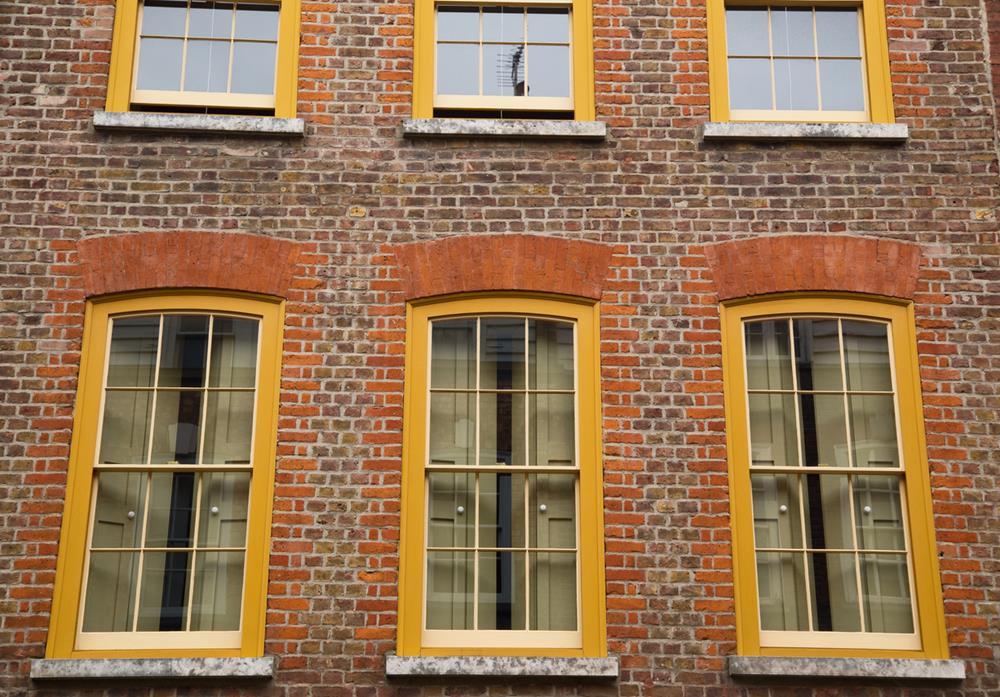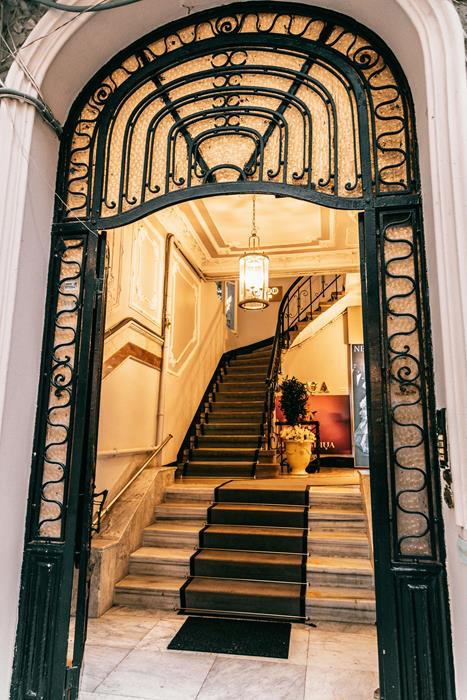Hey there, design enthusiasts and curious minds! Have you ever wandered through a neighborhood adorned with elegant, symmetrical houses and wondered about the stories these walls could tell? Or you’ve caught yourself swooning over the serene and balanced aesthetics of a period drama in the 18th century. If so, chances are you’ve been charmed by the timeless beauty of Georgian style. But what exactly makes Georgian architecture and interior design stand out? Let’s embark on a journey to uncover the main features of the Georgian style, a design era that continues to influence our spaces today.
The Essence of Georgian Style
The Georgian style is a masterclass in the beauty of simplicity and the elegance of symmetry. Moving away from the elaborate and highly decorative styles that came before it, Georgian architecture and interiors embrace a more restrained approach. The buildings are known for their proportional facades, with central doors and an even distribution of windows, creating a sense of harmony and balance pleasing to the eye.
- Uniformity: The repetition of shapes and patterns, such as windows and doors, creates a cohesive look.
- Classical Proportions: Drawing inspiration from ancient Greek and Roman architecture, Georgian design focuses on achieving perfect balance and proportion.
The Facade
Georgian facades are anything but ordinary. They are symmetrical and adorned with elements like pediments, pilasters, and cornices inspired by classical architecture. The primary material is often brick, with red being a popular choice, laid in a Flemish bond pattern, and accented with white stone or stucco around doors and windows to add a touch of sophistication.
- Brickwork: The texture and color of the brickwork lend a distinctive character to Georgian buildings.
- Decorative Details: Elements such as columns and pediments add a layer of elegance and grandeur.
Inside the Georgian Home
Step into a Georgian home and an abundance of light and spaciousness greets you. Large sash windows enhance the architectural symmetry and fill the rooms with natural light. The interiors boast high ceilings adorned with detailed plasterwork, adding to the feeling of openness without overwhelming the senses.
- Sash Windows: These iconic features offer beauty and functionality, allowing ample natural light.
- High Ceilings and Plasterwork: The intricate details in the ceilings contribute to the overall elegance of Georgian interiors.
The Grand Staircase
In Georgian homes, staircases are more than just functional; they showcase craftsmanship and aesthetic appeal. Often curving gracefully and featuring detailed balustrades, these staircases are a testament to the era’s appreciation for beauty in design.
- Craftsmanship: Using materials like mahogany for handrails and iron for balustrades speaks to the era’s quality craftsmanship.
- Design Focus: The staircase often serves as a central design element, reflecting the home’s elegance.
The Georgian Garden
The Georgian approach to gardens extends the style’s emphasis on symmetry, balance, and harmony with nature. Inspired by the work of landscape architects like Capability Brown, Georgian gardens are designed to appear as natural landscapes, albeit carefully curated ones, with features like rolling lawns, artificial lakes, and strategically placed clusters of trees.
- Integration with Nature: The layout and design of the gardens aim to create a seamless transition between the built environment and the natural world.
- Features for Enjoyment: Elements such as follies and grottoes add an element of surprise and delight to the garden landscape.
Fireplaces as Focal Points
In Georgian interiors, the fireplace is more than a source of warmth; it is a focal point of the room. Chimneypieces, often crafted from marble or wood, range from simple and elegant to ornately carved, reflecting the homeowner’s tastes and the room’s overall decor.
- Decorative Element: With detailed designs and placement, fireplaces contribute significantly to the room’s aesthetic.
- Material Choice: Using fine materials for chimneypieces underscores the Georgian era’s appreciation for quality and beauty.
Color and Pattern in Harmony
While often characterized by restraint, Georgian interiors also demonstrate a sophisticated use of color and pattern. Walls painted in soft, muted hues are a calming backdrop to vibrant textiles, detailed rugs, and wallpaper patterns, creating a richly layered and inviting atmosphere. This blend of subdued and lively elements is a testament to the Georgian era’s refined aesthetic, where every detail contributes to a harmonious and sophisticated environment.
Muted Walls, Bold Accents: This contrast ensures rooms feel spacious and dynamic and allows for personal expression through carefully selecting accessories and art. It’s a delicate balance that enhances the architectural features of a room while adding a touch of warmth and personality.
Textiles and Wallpapers: These elements add depth and interest to Georgian interiors by incorporating varied textures and intricate patterns. The strategic use of fabrics and wall coverings can transform a room, making it feel more luxurious and thoughtfully curated. This attention to detail elevates the design, ensuring each space is beautiful and inviting.
Georgian Furniture
The Georgian era furniture mirrors the architectural style’s emphasis on symmetry, proportion, and attention to detail. Pieces were designed to be both beautiful and functional, featuring clean lines and often crafted from quality woods like mahogany and walnut. This period saw the creation of furniture that was not only aesthetically pleasing but also built to last, reflecting a deep appreciation for craftsmanship and utility.
Elegant Simplicity: Furniture designs were understated, allowing the craftsmanship and material quality to shine through. This simplicity in design ensures that Georgian furniture pieces remain versatile and timeless, capable of complementing various interior styles without overpowering the space. The subtle elegance of Georgian furniture lies in its ability to blend seamlessly into contemporary settings, proving that true design transcends time.
Adaptable Designs: Many Georgian furniture pieces, such as drop-leaf tables and secretaire desks, were designed with versatility. This practical approach to elegance meant furniture could easily adapt to different uses and spaces, reflecting the era’s ingenuity in creating functional yet beautiful items. The adaptability of Georgian furniture makes it as relevant today as it was in the 18th century, offering solutions for modern living while retaining its classic charm.
Conclusion
The Georgian style, with its foundations in balance, proportion, and a keen eye for detail, offers a lesson in timeless design. It’s a celebration of simplicity and elegance, where every element, from the architecture to the gardens and furniture, works together to create a harmonious whole. As we’ve journeyed through the defining features of the Georgian style, it’s clear that its influence remains strong in contemporary design, offering inspiration for those seeking to blend classic elegance with modern living.
So, whether you’re planning to incorporate Georgian elements into your home or admire the style from afar, remember that the essence of Georgian design lies in its balance of form and function, beauty, and practicality. And who knows, this exploration has sparked a desire to bring a touch of Georgian grace into your own space. After all, the appeal of Georgian style is as enduring as the architecture itself, inviting us to appreciate the beauty in symmetry, the elegance of simplicity, and the warmth of well-designed spaces.




